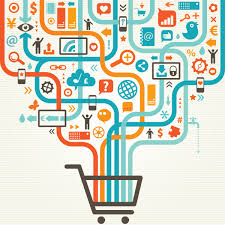Knowing and understanding your customers so the right product can be presented and sold to them in the appropriate way is the route to overall business success.
Thanks to advances in tech and ever more sophisticated marketing techniques it’s possible to gain much information regarding customer profiling. This shows their needs, desires, fears, problems, buying habits and demographics through careful tracking and the use of powerful POS (Point of Sale) systems when sales are transacted.
The impulse buy
Amongst certain customer behaviors that many retailers focus on is the impulse buy: where an item is purchased ‘in the moment’.
This can range from a shopper popping one or two extra items into their trolley at the supermarket that aren’t on their list to spending hundreds or even thousands of dollars on something they hadn’t intended to purchase.
Some impulse buys are prompted through someone simply responding to a basic trigger when grocery shopping: for example, a ‘two for one’ offer positioned prominently at the end of an aisle or on a shelf directly in the shopper’s eye line is one amongst many buyer manipulation tactics used by supermarkets.
Other impulse buys can be influenced by a more deep-seated motivation such as a psychological behavior: for example, the purchase of an expensive fashion garment or even a car based on peer pressure, a need to ‘show off,’ ‘feel better’ or other psychological triggers.
Buying with emotion
It’s said that most of us buy with emotion but justify it with objectivity.
Certain products such as cars are a prime example and explain why much automotive advertising revolves around a fantasy-like scenario: the car is seen on an open, sun-kissed highway as opposed to grinding through traffic jams in the city.
Other product advertising appeals to emotions and ‘how it makes us feel’. The fashion industry knows this well and promotes the subjective benefit of clothing ourselves in certain attire and the image it creates.
Influencing the impulse buy
Understanding how and why people purchase on an impulse occupies retailers constantly:
- Loss aversion – saying a product or item is discounted for a short time puts the buyer into an “I’ll lose this if I don’t act now” mindset and can stimulate a purchase.
- Playing on habits – commonly seen in supermarkets, this is where discounted products or multi-buy offers to provoke impulse purchases.
- In general, we don’t spend long periods evaluating every grocery purchase, so these offers are designed to take advantage of this short decision-making time – our ‘trigger response’ is to see the discount or bulk purchase and automatically feel it must be a good offer (our emotions kick in).
- Desire to save money – this is an evolutionary desire that has its roots dating back thousands of years when we needed to store food simply to survive harsh winters. This ‘drive’ manifests itself now in the desire to save and stockpile if given an incentive to do so – hence discounts and multi-buy offers.
- Upsell and cross-sell – a highly effective way to stimulate impulse buys in that people end up with more than they’d planned to buy.
A classic example is the McDonald’s “do you want fries with that?” or the “go large for XX”. Many people may initially intend to buy a basic hamburger. But they end up with fries and a drink when they’re cross-sold, or up-sold when they “go large” with a bigger portion of fries for the meal they’re ordering. Find your ‘McDonald’s offer’ and sell it.
A huge revenue source
Just imagine the extra money fast food retailers such as McDonald’s make on upsells and cross-sells. And how many impulse purchases have filled the coffers of retailers down the years. It’s worth understanding how upselling, cross-selling and even down selling work.
How many items do you own that are underused or ended up on eBay?










